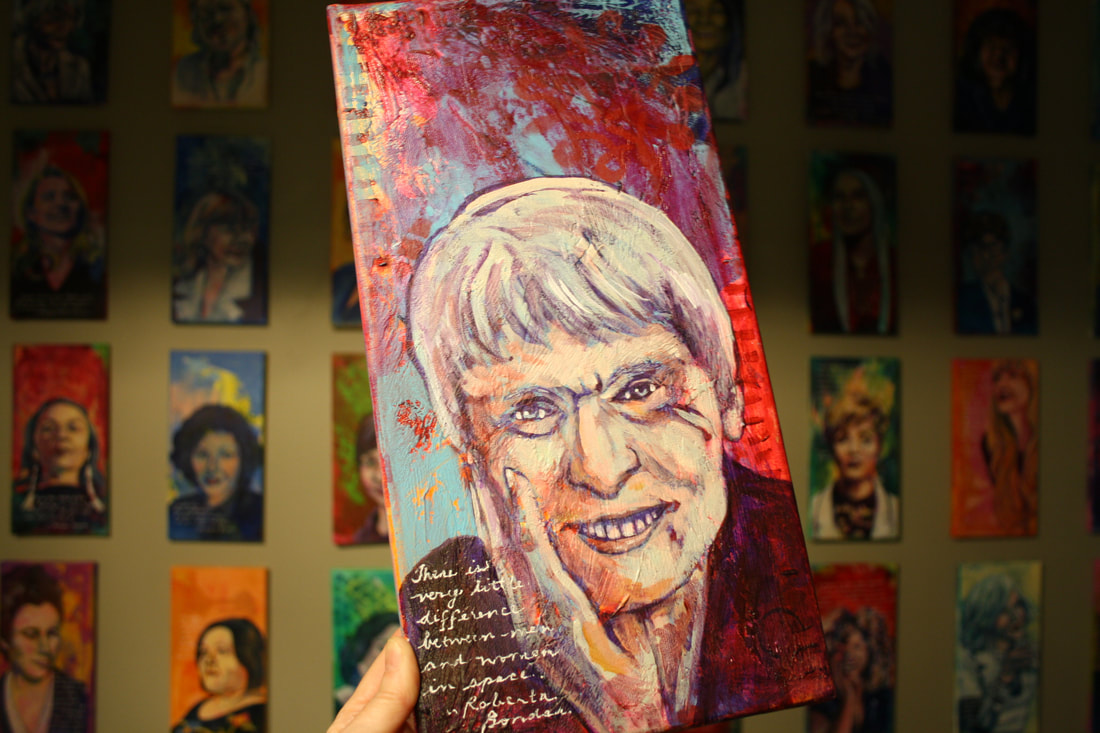There is very little difference between men and women in space. Roberta was interested in space as a child: “When I was eight years old, to be a spaceman was the most exciting thing I could imagine.” She was given a camera when she was young, which sparked her interest in photography. She was involved in sports, Girls Guides, the YMCA, and church groups in her youth.
Bondar was also very interested in science; her father built a laboratory in their basement so she could conduct experiments. She led the science team at her high school (Sir James Dunn Collegiate and Vocational School) and received honourable mention at the Canada Wide Science Fair in Grade 13. Bondar spent summers working as a science researcher with the federal Department of Fisheries and Forestry in Sault Ste Marie. Her high school guidance counsellor tried to dissuade her from pursuing science in university, believing that it wasn’t a subject for girls, but Bondar persisted. Bondar attended the University of Guelph, where she completed a Bachelor of Science in zoology and agriculture in 1968. During this time, she also received her pilot’s license. She continued in higher education, earning a Master of Science in experimental pathology from the University of Western Ontario in 1971, a PhD in neuroscience from the University of Toronto in 1974, and a Doctor of Medicine from McMaster University in 1977. Roberta Bondar worked as a clinical science researcher and neurologist, a doctor who specializes in the nervous system. She completed post-graduate work at Toronto General Hospital, the University of Western Ontario, Tufts New England Medical Center (Boston), the Playfair Neuroscience Unit of Toronto Western Hospital, and the Pacific Vascular Institute (Seattle). She was admitted as a Fellow to the Royal College of Physicians in 1981 for neurology. Bondar was an assistant professor of medicine (neurology) at McMaster University from 1982 to 1984. In 1983, the National Research Council of Canada created the Canadian Astronaut Program (now part of the Canadian Space Agency) to recruit Canada’s first astronauts. Roberta Bondar applied immediately. After six months of interviews and tests, she was chosen as one of six Canadians admitted to the program (see Canadian Astronauts). Her research and clinical work on the nervous system had immediate relevance to experiments planned for the first Canadian spaceflight. On 22 January 1992, Roberta Bondar became the first Canadian woman, the second Canadian, and the first neurologist in space. She flew aboard space shuttle Discovery, the only Canadian and woman of the seven crew members of NASA Mission STS-42. The mission was originally planned to last ten days, but changes in shuttles due to repairs shortened it to seven days. On the sixth day after launch, enough fuel remained to extend the mission to eight days. Being in space with low gravity meant that the astronauts had to adjust to changes in their bodies. In such weightless conditions, astronauts’ spines can lengthen by as much as 2–4 cm, which can cause back pains for some. Bondar reported that she didn’t need her glasses while in space, likely because of the effect of microgravity on the eye’s fluids. This was fortunate, as her glasses had floated away and become lost early in the mission. After 129 orbits around Earth, Discovery landed in California on 30 January 1992. The astronauts then underwent testing to compare how their bodies responded to conditions in space versus conditions on Earth. Bondar left the Canadian Space Agency on 4 September 1992. She continued to pursue her research in space medicine and led NASA research teams that studied data from spaceflights to apply to medicine on Earth. ~ Laura Neilson Bonikowsky & Emily Gwiazda Comments are closed.
|
|




